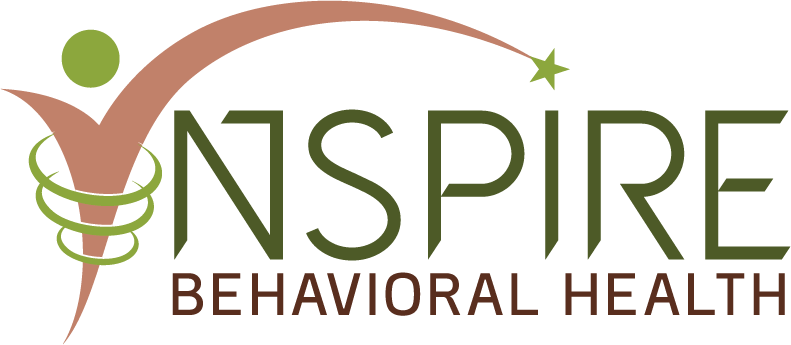
If you found yourself dreading the beginning of Daylight Savings Time each year as we “fall back”, you aren’t alone: 38% of Americans report a decrease in their mood in the winter.
We live through colder days and longer nights yearly, so it’s worth discussing the toll the winter months can take on our mental, physical, and emotional well-being.
You may be familiar with feelings of increased fatigue, sadness, and irritability during this time of year, symptoms often linked with seasonal depression.
Let’s discuss what a case of the winter blues looks like, how to maintain good mental health practices this winter, and when to consider that you might be dealing with a more serious condition like seasonal depression.
What Are the Winter Blues?
The “winter blues” are a common name, not a medical diagnosis, for the sadness you may experience during the winter months. Researchers have studied this phenomenon for decades alongside Seasonal Affective Disorder, a related medical condition.
They’ve found that the winter blues are often caused by something specific to you, like holiday-related stress, seasonal schedule changes, or sadness due to missing a loved one. The winter blues tend to pass quickly without any intervention.
The Winter Blues vs. Seasonal Affective Disorder
Seasonal affective disorder (SAD) is a mental health disorder that is directly related to the shrinking amount of daylight. Less sunlight in fall and winter can cause an increase in melatonin and may disrupt the body’s circadian rhythm. Melatonin is a hormone that helps to regulate our circadian rhythm, the internal clock that helps us know when to sleep and when to wake.
A person with seasonal depression may experience an increase in melatonin production when they lack sunlight in the fall and winter, leading to extreme sleepiness that disrupts the body’s normal functioning during the day.
If you have Seasonal Affective Disorder, your body’s serotonin production may also decrease during the winter. Serotonin is a neurotransmitter that helps with mood regulation.
Unlike the winter blues, SAD interferes with the ability to function normally on a daily basis and comes back every year when a person’s exposure to sunlight changes.
Mental Health Hygiene Tips to Beat the Winter Blues
Whether you’re dealing with the winter blues or a serious case of SAD, these tips can help you get through day-to-day life with a little more ease.
Exercise regularly
Small, intentional movements throughout the day can help improve your mood, especially if you can get outside to exercise. You don’t have to be a gym buff or passionate about CrossFit to experience the benefits of movement during your day. Your movement can be as simple as taking a short walk or doing yoga at home. Research shows that choosing to engage in small amounts of exercise day after day adds up. It’s ideal to do 15 minutes of higher-intensity exercise or an hour of low-intensity exercise a day for optimal effects on your mood – but do what you can – and be proud of what you accomplish!
If you already have an exercise routine in place, that’s great – maintaining it throughout the winter months will help reduce the risk of feeling down or suffering from depression.
Maintain healthy sleep habits
Quality of sleep, time spent sleeping, and a consistent sleep schedule are three key factors in our sleep routines. Our body needs sufficient, high-quality rest to help our brain process and store our day-to-day experiences in our long-term memory center.
Additionally, our body uses the time we’re asleep to perform vital repair processes across all of our organ systems – meaning that if we miss out on high-quality sleep for long enough, we’ll start to notice the physical and mental effects, from decreased cognitive functioning to simply not feeling so great.
If you are finding it difficult to regulate your sleep schedule, a light box for light therapy treatment may help as it imitates daily exposure to sunlight in the darker months. Light therapy can help improve sleep and overall mental health by regulating the body’s circadian rhythm.
Healthy sleep habits are always vital to our health, and at a time of year when many of us are more susceptible to feelings of stress, sadness, and irritability, good sleep is a must.
Connect with loved ones
Humans crave social connection, a huge factor in our physical and mental health. So, it makes sense that we feel better when we feel more connected to a strong support network of friends and family. But it can be very easy to self-isolate when we’re experiencing strong negative emotions, and picking up the phone or sending a text may feel very overwhelming.
While it may be difficult, consider reaching out to a trusted friend or family member who you can be yourself around. If your loved ones live far away, schedule phone calls or video chats. Look into making new friends in your community. Even though you may be struggling, it’s important to be as open as you can about what you’re going through with a trusted member of your community.
Ongoing social connection can help us be more resilient, relieve anxiety and stress, promote healthy habits, and improve our overall quality of life – so go ahead and phone a friend today.
Practice mindfulness
For all the hype around meditation and mindfulness, there’s an extensive body of research that shows that what your friends or social media have been telling you is true: mindfulness can help you feel better. It can help you let negative thoughts go instead of fixating on them, sit with uncomfortable feelings, and develop healthier habits.
Try becoming mindful of your thoughts for just five to ten minutes a day. Observe what you’re thinking about, and let it go. Washing the dishes or taking a walk can be a good time to practice observing what’s going on in your mind.
You can use meditation and mindfulness apps if you’re completely new to mindfulness. You can also practice mindfulness by walking, moving your body intentionally, or being completely present instead of daydreaming while doing the chores.
Start a journaling habit
Journaling is a powerful way to identify your feelings and process your recent experiences. This practice can put space between you and intense emotions or experiences while allowing you to express your feelings – without worrying about what anyone else will think. Journaling allows us to slow down and reflect on how we feel without needing to react to what someone else said or did right away.
When to seek professional help
It’s not uncommon to experience low energy, a lack of motivation, and isolation during the winter months. These tips we’ve outlined to address the winter blues can be so helpful when implemented in a daily routine – but sometimes, you may need more support.
Consider seeing one of our providers at Inspire Behavioral Health if you:
- Feel depressed for long periods of time
- Have trouble concentrating
- Don’t find joy in activities you usually love
- Experience large mood swings
- Find yourself sleeping more often
- Struggle with feelings of low self-esteem, shame, and/or worthlessness
These may be signs of Seasonal Affective Disorder or another treatable behavioral health disorder. Any symptoms that disrupt your ability to lead your life from day to day are something you should discuss with a medical provider.
Winter is coming – so let’s embrace it with open arms and our toolkit of mental health tips. By incorporating a few of these strategies into daily life, you’re setting yourself up to navigate winter with a more positive outlook. Contact us at Inspire Behavioral Health if you need more mental health support. Let’s make this winter a season of growth and well-being!







